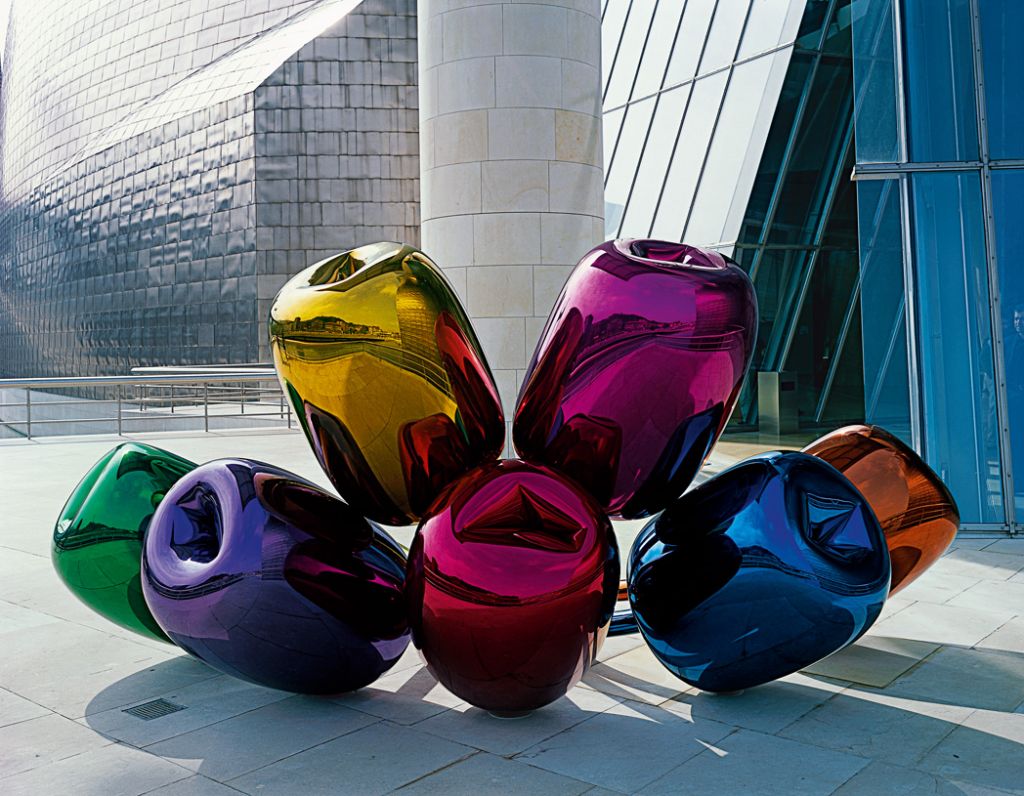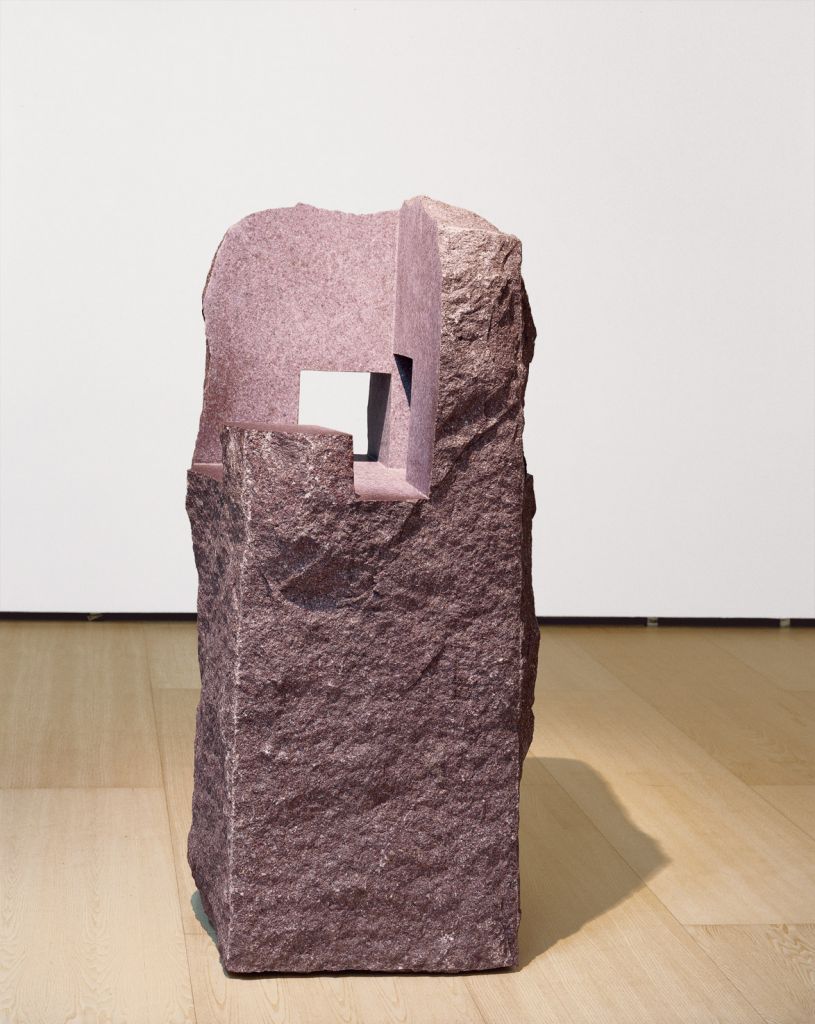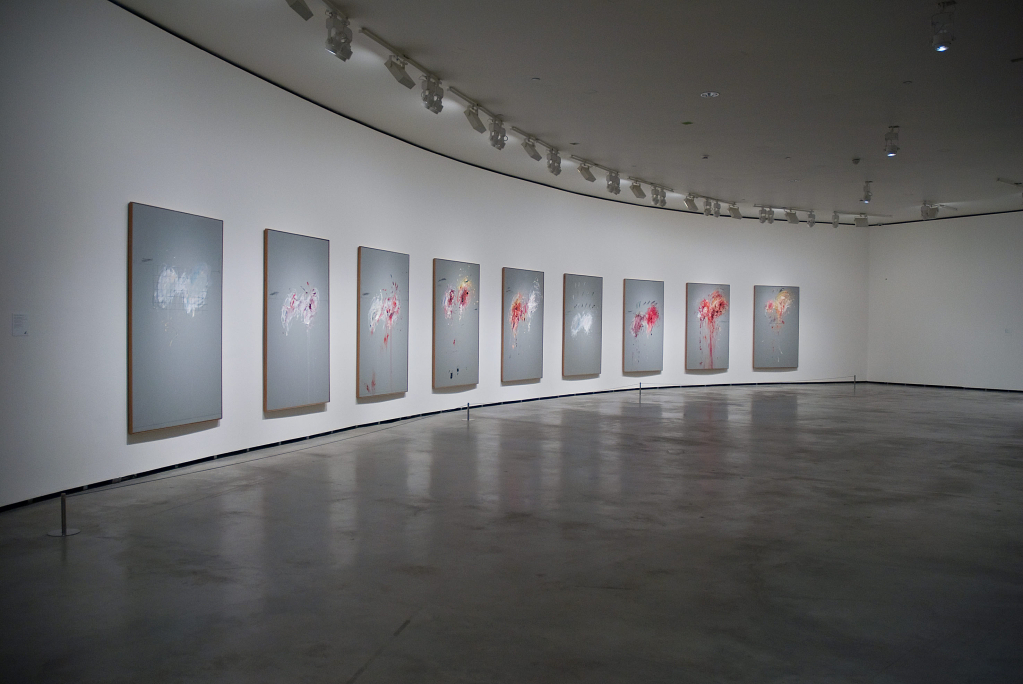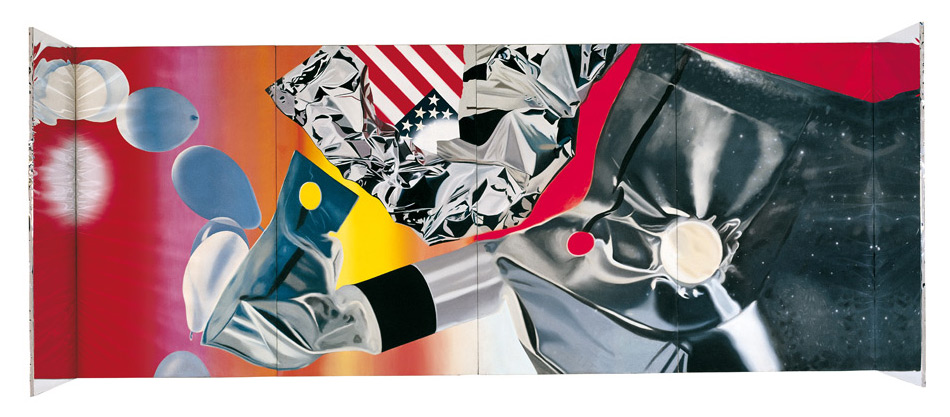Ikaraundi-EQDALOS (Head Kneeling Against the Wall)
2013Paper, metal, MDF, wood, and projectionOverall dimensions variable
Iñaki Garmendia (b. 1972, Ordizia, Gipuzkoa) focuses on certain aspects of local intrahistory, art history, and youth subcultures, isolating their constituent elements in order to reinterpret them in a global context. The work challenges viewers to identify the images that populate his works—whether in videos, performances, photographs, or drawings—and to reflect upon their own experiences in order to find keys to interpret them.
Pivotal works as his Txitxarro series (2000); Blow After Blow (Kolpez kolpe) (2003); Red Light/Straight Edge (2006); Untitled Orbea (Orduña) (S/T Orbea [Orduña]) (2007); No R.S. (99 Red Love Balloons) (2008); and Untitled (Six Peaks) (Sin título [seis picos]) (2011) reveal the artist’s two principal lines of work, which are often interrelated: the decontextualization and fragmentation of cultural icons and objects, and the study and reinterpretation of experimental audiovisual filming and editing processes. Garmendia’s camera, with its persistent presence, is not a passive instrument that merely records action—it actually creates a situation of tension and uneasiness.
The piece that Garmendia created especially for the exhibition Garmendia, Maneros Zabala, Salaberria. Process and Method, held at the Museum in 2013, Ikaraundi – EQDALOS (Head Kneeling Against the Wall) (Ikaraundi – EQDALOS [burua paretan kontra belaunikatuta]) (2013), is a synthesis of his work to date. Taking as his starting point the few existing photographic records of Jorge Oteiza’s bust of painter José Sarriegui (no longer extant), Garmendia applies industrial engineering processes to his own engineering of memory and recollection in a direct, radical way. The consequences of this procedure are presented in different formats, such as a video that focuses on the head as its central motif, underscoring its objectual and iconic nature in a manner reminiscent of Garmendia’s works Bomber (2013) and Untitled Orbea (Orduña), where spectacularity is conspicuously absent. The narrative quality hinges on how the actions were recorded; however, in Ikaraundi, the actions are contaminated by the artist’s own voice as it tells a disjointed tale that jumps back and forth in time. Thus, the artist configures a personal puzzle and presents it to both the audience and himself.
Original title
Ikaraundi-EQDALOS (burua paretan kontra belaunikatuta)
Date
2013
Medium/Materials
Paper, metal, MDF, wood, and projection
Dimensions
Overall dimensions variable
Credit line
Guggenheim Bilbao Museoa






